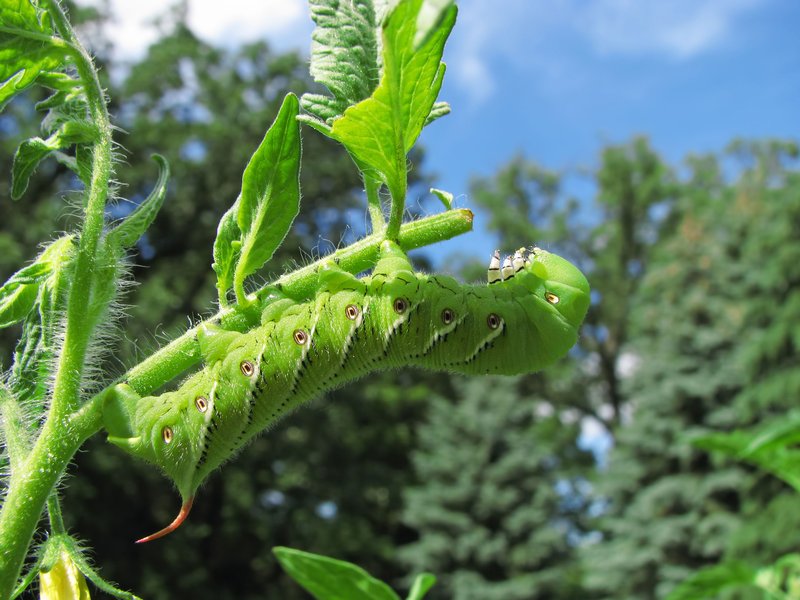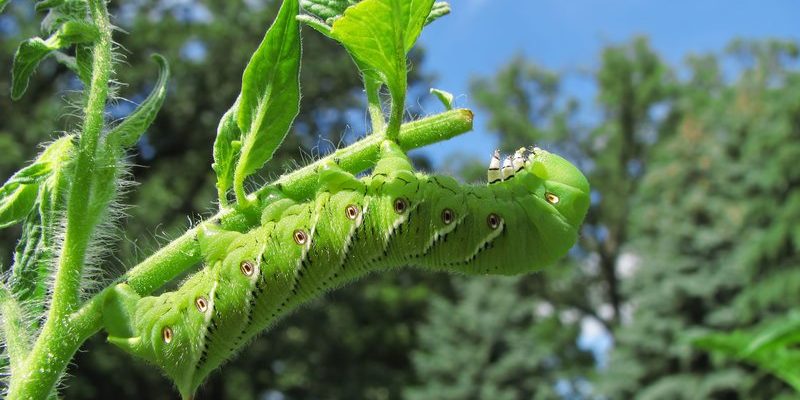
Understanding the difference between **hornworm damage** and **caterpillar damage** is essential for any gardener. Just like a seasoned chef knows how to handle various ingredients, knowing how to identify and address these pests can help you preserve the beauty and health of your garden. So, let’s break it down, shall we?
What Are Hornworms?
Hornworms are the larvae of moths in the Sphingidae family, often having vibrant green bodies with a horn-like protrusion on their rear. They’re sometimes mistaken for caterpillars, but their size and markings set them apart. These pests typically target plants like tomatoes and peppers, making them a homeowner’s nemesis.
One of the most common types of hornworms is the **Tobacco Hornworm**. They can grow up to 4 inches long! That’s a pretty big caterpillar. Their large appetite makes them particularly damaging, as they can munch through leaves in no time. Just imagine going to your favorite vegetable patch, only to find that all your plants have been stripped bare. Not a fun sight!
Signs of Hornworm Damage
Spotting hornworm damage early can save your plants. Look out for these signs:
- Missing Leaves: Hornworms love to feast, so if you notice leaves disappearing, it might be them.
- Frass: This is a fancy word for caterpillar poop. If you see small dark pellets on the ground, it’s a telltale sign of hornworm presence.
- Visible Hornworms: Sometimes the best way is just to look. They’re big and can be found right on the plants, camouflaging with the leaves.
Let me explain: if you catch these signs early enough, you can take action before they wreak too much havoc.
What Are Caterpillars?
Now, let’s switch gears and talk about caterpillars. This term covers a broad range of larvae, including those that become butterflies and moths. Unlike hornworms, caterpillars come in various shapes, sizes, and colors. They might be cute, but don’t let that fool you—some can be quite destructive.
Caterpillars, like the **Luna Moth Caterpillar**, can also wreak havoc in your garden. They often feed on a variety of plants, and their feeding habits can be different based on their species. Imagine having a friendly visitor who just doesn’t know when to stop eating!
Signs of Caterpillar Damage
Just like with hornworms, recognizing caterpillar damage is key to protecting your plants. Here are some signs to look for:
- Chewed Leaves: Caterpillars tend to nibble on the edges of leaves, creating a ragged appearance.
- Silk Webbing: Some caterpillars create silk webbing on plants to camouflage themselves or as a nest for their next stage.
- Presence of Caterpillars: They can be colorful or blend in with their surroundings, so keep an eye out!
You might be wondering, how do I tell them apart? Hang tight, as we’re about to dive into that.
Hornworm Damage vs. Caterpillar Damage: Key Differences
Alright, let’s get to the heart of the matter. While both hornworms and general caterpillars can cause damage, their approaches and effects differ.
**Size and Appearance**: Hornworms are usually larger than most caterpillars. This size difference means they can cause more significant damage in a shorter time. Their distinct horn also helps identify them.
**Feeding Habits**: Hornworms tend to be more aggressive eaters. They strip leaves and stems quickly, which can lead to rapid plant deterioration. In contrast, many caterpillars may take smaller bites or feed on specific parts, allowing for potential recovery.
**Damage Type**: Hornworm damage is often more extensive and noticeable, while caterpillar damage can be subtler. If you see extensive defoliation, it’s likely hornworms. If it looks like someone took a bite out of a leaf, a caterpillar might be responsible.
Dealing with Hornworms
If you find hornworms in your garden, don’t panic. Here are some steps you can take to manage them effectively:
- Hand-Picking: You can manually remove them from your plants. Just wear gloves and check under leaves, where they like to hide.
- Beneficial Insects: Encourage natural predators like wasps or birds to help control their population.
- Pesticides: If the infestation is severe, consider using organic pesticides. Just be cautious about the impact on beneficial insects.
Remember, early detection is your best friend here. Regularly checking your plants can save you a lot of heartache.
Managing Caterpillar Damage
Caterpillars can also be managed effectively. Here’s what you can do:
- Regular Inspections: Just like with hornworms, make it a habit to check your plants frequently for signs of caterpillar activity.
- Natural Predators: Maintaining a healthy ecosystem can help regulate caterpillar populations naturally.
- Physical Barriers: Consider using row covers to protect young plants from caterpillars.
Preventing caterpillar damage is all about vigilance and a proactive approach.
Why It Matters
So, why should you care about distinguishing between hornworm damage and caterpillar damage? Well, understanding the differences aids you in choosing the right action to take. Using the incorrect management strategy could waste your time and resources, or worse, cause harm to your plants.
Moreover, knowing the enemy helps you foster a balanced garden ecosystem. You want to protect your plants while allowing beneficial insects to thrive.
In the battle for your garden, identifying whether you’re dealing with **hornworm damage** or **caterpillar damage** is crucial. Each has its own characteristics and requires different management techniques. By keeping an eye on your plants and recognizing the signs of both pests, you can take action early and ensure your garden stays vibrant and healthy.
Remember, a little knowledge goes a long way, and with these tips in your gardening toolkit, you’re well on your way to thriving green spaces! Now, go out there and keep your garden safe from those hungry little monsters!

